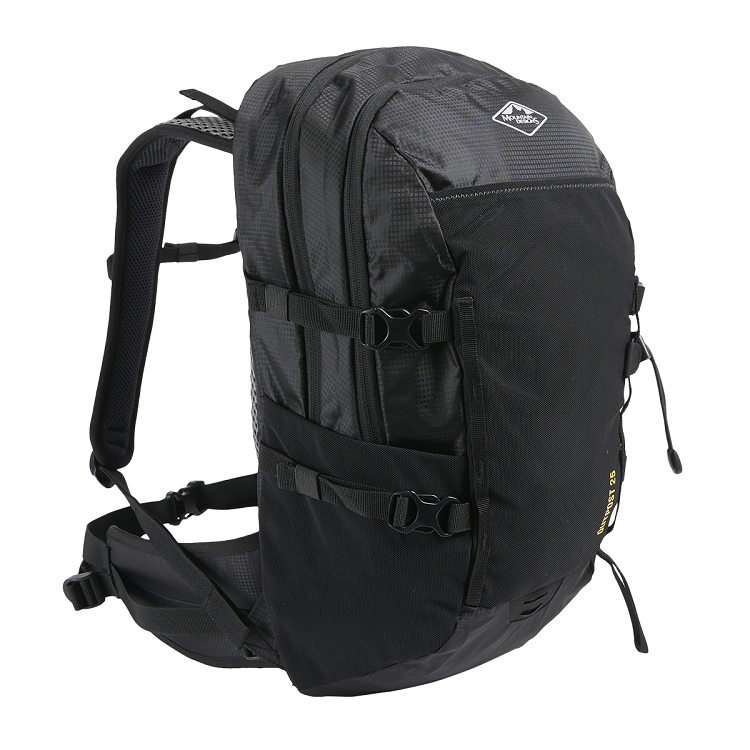| Your browser is not supported. | ||
|
Please browse our site using any of the following options:
| ||
Bardedjulidji Walk - Top Hikes In The Top End: Part 1
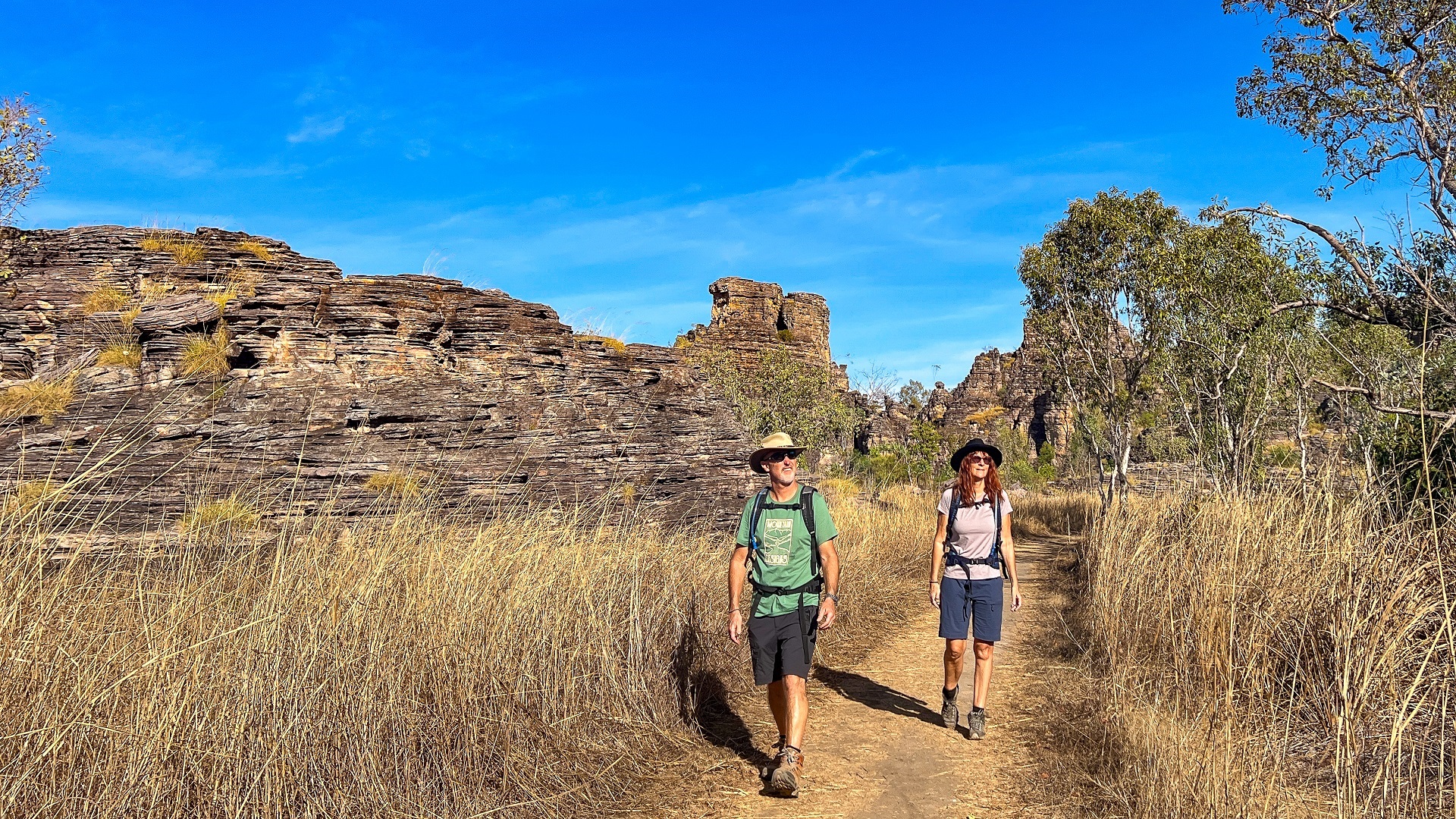
Location: Bardedjulidji Walk, Kakadu National Park, Northern Territory
Distance: 2.5km
Time: Allow 1.5 - 2 hours, there's lots to see on side excursions
Grade: 1 - Easy
Access: Start from the carpark near the East Alligator River Upstream boat ramp
Walk Us Through It:
We almost didn't do this walk, but we are so glad we did as it was a definite favourite in Kakadu. Everyone goes to the rock art sites at Ubirr and Burrunguy (Nourlangie Rock), but the great surprise on this walk was all the hidden art. As we did this walk as a spur-of-the-moment, 'we're here, let's just do it' kind of thing, we hadn't done much research on the walk before we set out and we actually did the walk in the reverse of the recommended direction. However, that ultimately turned out to be a good decision.

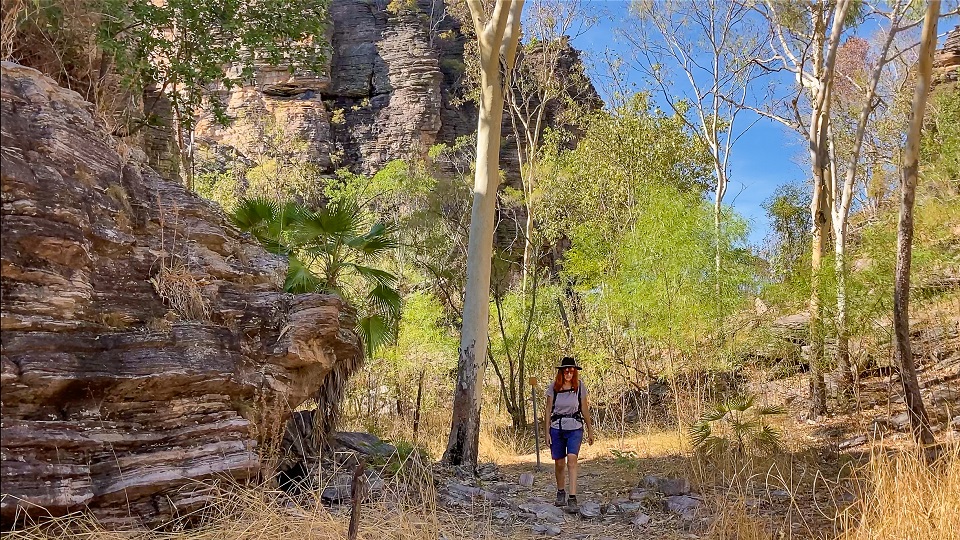
Meet Nigel and Sue, whose country-wide travels recently took them to the Northern Territory for some top treks. (Images courtesy of Nigel & Sue Adventures)
From the car park we walked down to the river, and through some rainforest. Along the river there are quite a few little paths that you can go and have a look out over the water but beware: crocodiles have been sighted in this area. We didn't see any though, that may be because it was high tide. This walk is not far from Cahill's Crossing, where the crocs all head as the tide comes in and washes the fish over the crossing. We saw at least 20 BIG salties at the crossing the previous afternoon. Bird lovers will want to spend some time along this river section of the walk too, as there are a lot of water birds - we saw a couple of herons high in the trees.


East Alligator River (left), while Nigel explores a secluded billabong (right). (Images courtesy of Nigel & Sue Adventures)
The first stage of the walk doesn't seem that exciting. There is a broken down picnic table along the path and not much else really to look at apart from the river, however after a short time the path veers away from the river, past a small billabong (with another crocodile warning sign) and starts to head toward the stone country. Not only were we looking at these incredible outcrops of stone as we walked past them, we also got to walk through them. These rocky sandstone outcrops were formed when this area was covered by a lake around 1,500 million years ago, and over time, as the waters receded, the wind and water eroded most of this stone away, leaving these outcrops in all sorts of unusual shapes. The elusive Black Wallaroo is known to inhabit this area, however we weren't lucky enough to see one.

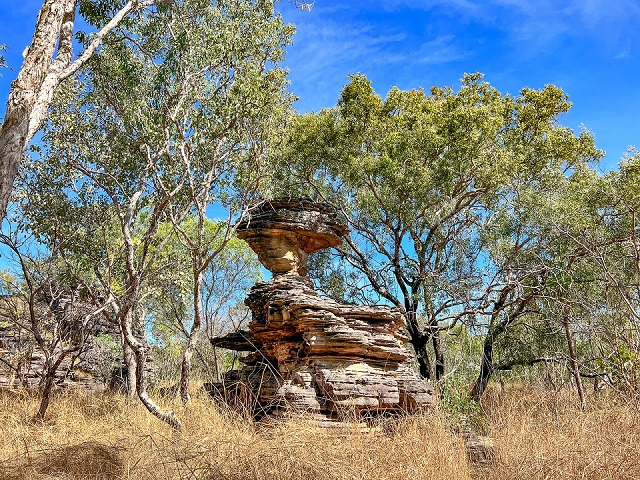

Sandstone outcrops surrounded Sue and Nigel for most of their walk. (Images courtesy of Nigel & Sue Adventures)
Getting closer to the Rock outcrops we realised the path led us through a natural tunnel, and it was surprising how much cooler it was in the tunnel. Even though it was only early in the morning, it was already quite warm, and standing in the shaded tunnel for a few moments was quite a nice relief! Leaving the tunnel, we noticed a post with a number 7 on it. We had seen a couple of these signs and not known why they were there or what they represented. Looking over to the rock, we noticed a small cave, so went in to investigate.

Sue and the natural tunnel that momentarily offered a reprieve from the hot NT temperatures. (Image courtesy of Nigel & Sue Adventures)
Imagine our surprise when we discovered this cave had evidence of human habitation in the form of a grinding stone. We'd previously learnt how the indigenous people would use the stones to grind seeds to make a type of flour, or grind up pigments for their rock art. Sure enough, when we looked up we found some rock art, hand prints and other paintings. We were amazed that other than the #7 there were no signs pointing to the cave, and nothing was roped off. It almost seemed like we were discovering this for the first time! The temperature in these caves was much cooler, they would have been a welcome respite for the aboriginal people.

Evidence of human habitation surprised us, here Nigel observes a grinding stone. (Image courtesy of Nigel & Sue Adventures)
We continued walking up and over one of the outcrops and then came to one of the most spectacular pieces of rock art that we've seen in Kakadu. Probably because it was so hidden away and there wasn't a sign pointing us towards it, we were really excited when we found this piece of art. In fact, we saw quite a few hidden rock art displays, which is one of the reasons we loved this walk so much. There were surprises around every corner and we wondered what else was there that we hadn't seen.
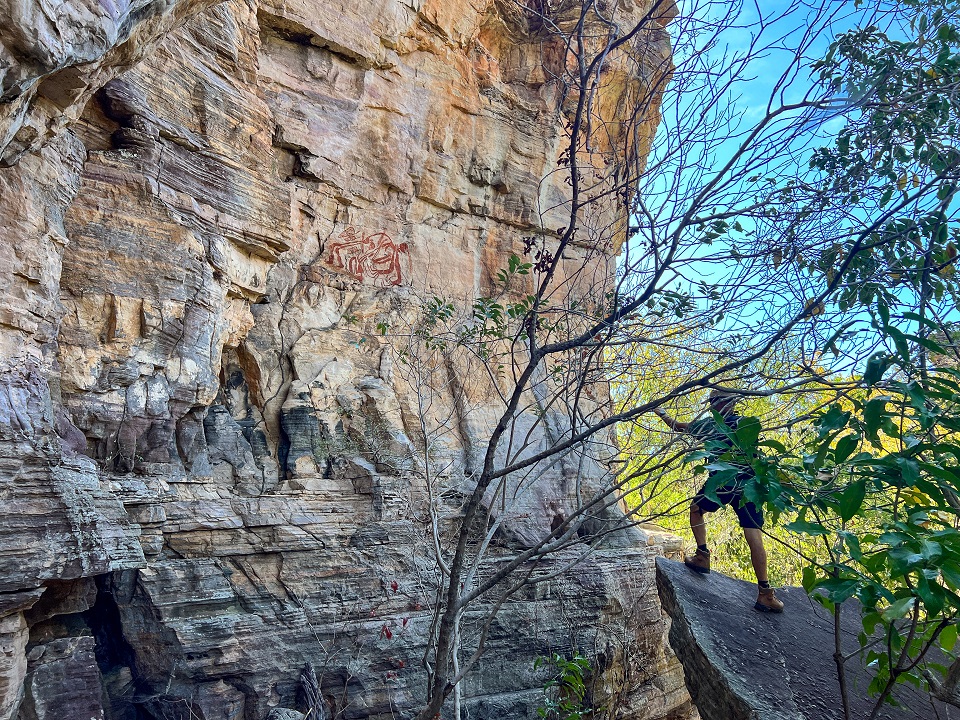
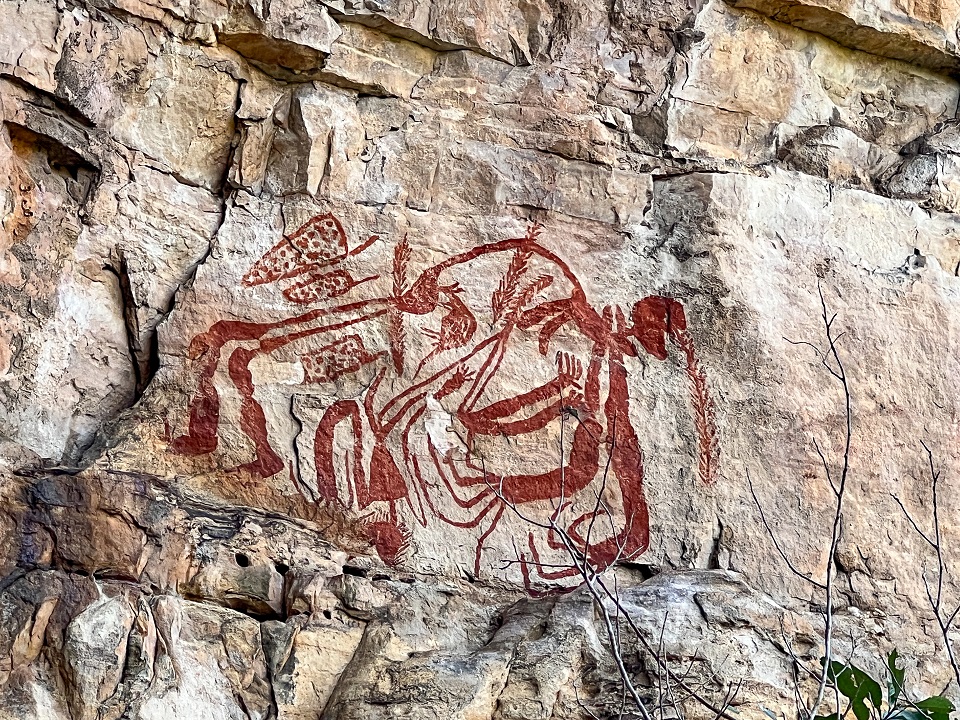
The highlight of the walk was without doubt finding some hidden rock art. (Images courtesy of Nigel & Sue Adventures)
There is a side path that leads back towards the beginning of the stone country section of the walk - during the wet season, the path along the river is closed due to flooding. Leaving the stone country, the path continued through the savanna land where we marvelled at the shapes in the smaller rock outcrops before making our way back to the carpark.
The highlight of this walk was finding all the hidden rock art, it was almost like a game seeing who could find the art first. This hike took us around two hours, with a lot of stops to discover the hidden gems. Other than the one short climb up and over the outcrop, this hike is flat, and would be accessible by almost anyone.
Video & Photo Credits
All video and imagery supplied by Nigel & Sue Adventures
- Instagram @nas_adventures
- YouTube @nigelandsueadventures



